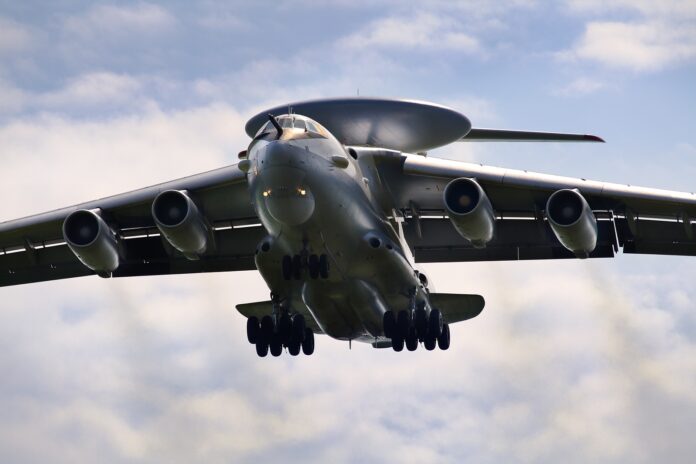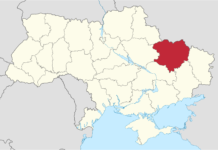Yesterday, Ukrainian forces announced the downing of a Russian A-50 early warning and control aircraft. The incident marks a crucial moment for Ukraine as it continues to contend with the ongoing challenges at the front lines of conflict. This development comes as the nation commemorates the somber milestone of two years of sustained hostilities.
On the day dedicated to honoring military personnel in Russia, known as Defender of the Fatherland Day, Ukraine’s Air Force Chief, Gen. Mykola Oleshchuk, conveyed a caustic message by confirming the successful engagement against the sophisticated Russian aircraft. He extended his gratitude towards the nation’s military intelligence for their pivotal role in this operation.
The downing of the A-50 is particularly impactful due to its integral function within the Russian military’s operational framework. It acts as a high-capacity reconnaissance tool, capable of detecting targets from significant distances, hence facilitating command and control over large battlefield areas. With the ability to coordinate and direct the movement of ground forces, the loss of such an asset can impede the operational momentum.
Visual evidence of the incident, broadcasted by Ukrainian media, depicts the aftermath of the crash in the Krasnodar region, adjacent to the Sea of Azov, characterized by a substantial conflagration. While the Russian military has not officially addressed the claim, reports from local emergency services in the Krasnodar region acknowledged a plane crash without specifying its type. Corroborating the Ukrainian stance, various Russian military bloggers have affirmed the loss of the aircraft, with some suggesting the possibility of a friendly fire scenario.
This incident, should it be verified, signifies the second such loss for Russia within a span exceeding a month. The Ukrainian military has previously asserted that it had neutralized an A-50 over the Sea of Azov in mid-January, a claim unacknowledged by Russian forces but seemingly validated by independent Russian media outlets and bloggers.
The Russian A-50 fleet, reportedly consisting of a mere nine aircraft, each equipped with a voluminous radar dome and requiring a crew of fifteen, represents a substantial investment in terms of military capital. The purported price tag of $350 million per unit underscores the gravity of the loss from a fiscal and strategic standpoint.
This episode surfaces as Ukraine endeavors to recover from the recent capture of Avdiivka, a strategically positioned city in the east, after intense combat. The victory afforded to Russian forces there has been perceived as a pivotal moment, galvanizing Moscow to consolidate its military capabilities while transitioning its economy to sustain prolonged conflict efforts.
The implications of the downed A-50 extend beyond the immediate tactical loss, resonating with Ukraine’s western allies who have been closely monitoring the situation. Kyiv has been actively seeking to expedite the provision of military aid to bolster its defenses against the Russian offensive. As the conflict lingers on, with the front lines extending over 1,000 kilometers, the downing of the Russian aircraft not only punctuates the resilience of Ukrainian forces but also serves as a vivid reminder of the fierce independence and resolve characterizing Ukraine’s stance on the global stage.
Image is licensed under the Creative Commons Attribution-Share Alike 3.0 Unported license and was created by Oleg Belyakov.










